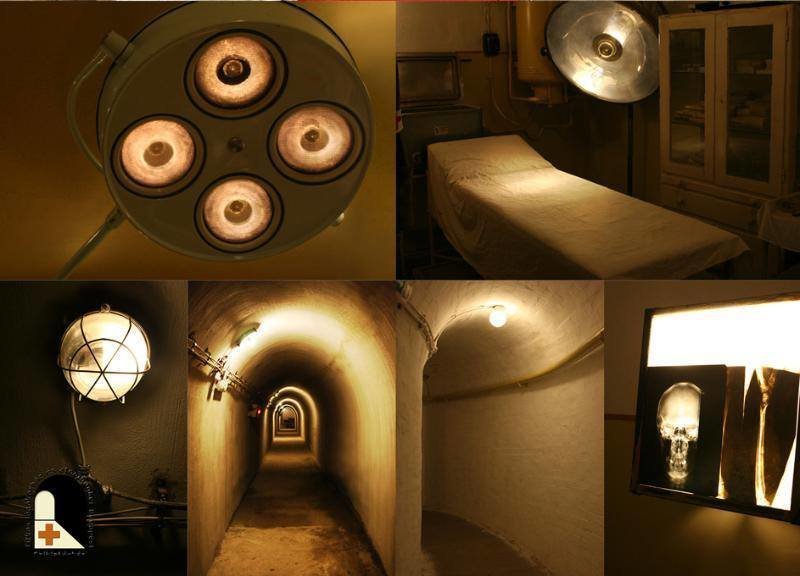Secret hospital lies under Budapest
It is one kilometre long and lies under the Buda Castle. In the 1930s it was only supplied by plumbing which exploded in the first weeks of the siege of 1944. It resuscitated for a few days in 1956 and was made nuclear-proof in the 1960s. It was a secret place until 2002. The Hospital in the Rock today functions as a spectacular museum.
According to origo.hu, “LOSK 0101/1” was the code of subterranean hospital that was built in the 1930s-1940s in a natural cave system. These extremely rare caves are located under the Castle Hill. It was first called Székesfővárosi Sebészeti Szükségkórház.
71 years ago countess Ilona Andrássy started her service as a head nurse in the Hospital in the Rock. She worked two years for the Hungarian-Polish Refugee Committe from the beginning of the World War II.It played a key role in the supply of the people of Buda and injured soldiers during the siege of the castle in World War II. This medical base that wimples underground for one kilometre was available to the injured and the poor in the most tragic moments of the 20th century history of Budapest. It was re-opened for a few days in 1956 and besides taking care of the injured, six baby boys and one baby girl was born in the ward for women patients.
It became a secret place during the Cold War. Between 1958 and 1962 the Hospital in the Rock was converted into a nuclear bunker. This meant that the Hospital could have been used even in case of a black-out. In the event of a nuclear or chemical attack, the institution would have been able to accept survivors – at least in theory.
They had a strict plan for a nuclear attack. 20 minutes after the attack the doctors would’ve had to lock themselves into the hospital and could’ve only opened the doors 72 hours later. The survivors could’ve only gone into the hospital, which had backups that would’ve lasted for three weeks, then. The survivors would’ve been decontaminated, their hair would’ve been cut and they would’ve been cleaned with a special decontaminating liquid.
The Hospital in the Rock is not a medical establishment anymore; it is mainly visited by tourists who are curious to see this special and historical place.
The museum offers several exhibitions for its visitors. Medical students get the chance to see the evolution of surgical instruments, while the general public can have an authentic glimpse into what the hospital looked like during World War II. Even a helicopter is displayed which represents the newer eras of rescue history.
Hospital in the RockThe newest part of the exhibition shows the rescue mission of the Hungarian corps in Afghanistan, when Hungarian soldiers saved their American mates from a very dangerous situation.
Read more about the Hospital in the Rock here:
http://www.sziklakorhaz.eu/en/tortenet
Translated by Alexandra Béni
Photo: https://www.facebook.com/Sziklakorhaz.Hospital.in.the.Rock/
Source: http://www.origo.hu/
please make a donation here
Hot news
Hungarian government prioritises family support, plans major tax relief boost
Cinema City ticket prices increase in Budapest from November, introducing new junior ticket option
Hungary stands alone: Orbán declares nation a ‘conservative island’ in Europe’s ‘liberal ocean’
TODO Mexican Kitchen: A new taste of Mexico in Budapest
Hungary and Ukraine negotiate cooperation agreement amid tensions over ethnic Hungarian rights
Tax changes in 2025 in Hungary: Airbnb tax skyrockets, currency conversion fee remains, plane tickets may be cheaper




1 Comment
I visited the “Sziklakórház” in April of this year, and what i saw is really impressive, is truly a huge hospital inside the Buda´s hills.
Now is like a museum with a very well made exibition, with lots of original artifacts that told the story of the brave doctors, nurses and others, with their intent to save lives in WW2, even with a terrible lack of resources, as medical supplies or clean water.
I recomend to everyone that to go to Budapest, to visit the “Sziklakórház” because the place have a huge historical importance and is quite unique.